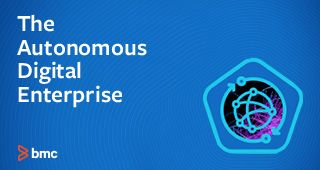As companies continue to pivot and adapt in response to the pandemic, more of them have turned toward automation, artificial intelligence (AI), and machine learning (ML)—the trifecta behind intelligent automation—to help them streamline their business processes and better prepare for future “what if” scenarios.
In its Automating with Intelligence study, Deloitte saw a significant uptick in the adoption of intelligent automation in 2020, with 73 percent starting their intelligent automation journey—a 15 percent increase over 2019. Of those, 37 percent are piloting (1–10 automations), 23 percent are implementing (11–50 automations), and 13 percent are scaling (51+ automations).
According to the study, companies deploying new intelligent automation initiatives expect a 15 percent revenue increase in the targeted areas and a 24 percent average cost reduction over the next three years. The number of organizations deploying at scale nearly doubled, and Deloitte expects a bigger return on investment versus the 2019 study. Among the companies surveyed, 38 percent have mature process definitions, standards, and management in place, and 37 percent have appropriate standards controlled by an intelligent automation center of excellence.
And Accenture found in its Fast Track to Future-Ready Performance report that the small-but-mighty seven percent of its respondents who have already evolved from predictive to future-ready technology like intelligent automation have boosted profitability 5.8 percentage points and achieved efficiency gains of 18.8 percent. On average, they were 2.8 times more profitable and 1.7 times more efficient than those at other levels.
The new wave of automation
In the race for digital transformation, and to keep pace with rapidly evolving market and competitive pressures, it’s no longer enough to simply automate certain functions. The latest automation technologies include a degree of cognition, analysis, and learning that can benefit the entire business.
Intelligent automation characterizes the whole journey from basic automation—automating actions with the least potential business impact—to fully autonomous, incorporating the power of AI and applying a set of methods and algorithms from which, with the right set of data, it can learn and adapt. While AI for operations (AIOps) tells you something happened and gives you a higher order, insights, and analysis, intelligent automation takes it a step further and explores what you can do as a result, with automated actions that are:
- Predictive—see failure coming
- Preventive—stop it from happening
- Prescriptive—tell you how to fix
Human intervention based on risk and other business-impacting scenarios can be interwoven with automation to approve actions when necessary, and it’s still an integral part of how, when, and where automation is implemented. An IDC Survey Spotlight, “Enhancing IT Operations with Automation Is a Priority in 2021,” noted that there’s still a significant need for upskilling to effectively leverage all that automation has to offer, as 20.1 percent of organizations surveyed say they don’t have the human expertise required to use automation effectively at enterprise-scale.
And that expertise can be the tipping point between success or failure. IDC estimates that through 2023, many IT automation initiatives will be delayed or will fail due to, “an underinvestment in creating IT/Sec/DevOps teams with the right tools/skills.”
Automation and the Autonomous Digital Enterprise
Intelligent automation factors heavily into the Autonomous Digital Enterprise (ADE), a future-state framework that envisions automated processes spanning every business function. Automation Everywhere is one of its tenets, guided by ML and informed by advanced analytics.
By using the power of AI and applying methods and algorithms that can learn and adapt from the right set of data, intelligent automation comes to life in integrated IT operations management (ITOM) and IT service management (ITSM) environments, as well as the emerging AI service management (AISM).
Previous efforts to automate piecemeal over time have increased complexity instead of enabling agility and innovation across the business. That complexity is likely to increase as more hybrid/multi-cloud workloads; Internet of Things (IoT)- and edge-created data; process automation; and decentralized application development are introduced.
Organizations will need to adopt intelligent automation and advanced enterprise automation and workload management solutions to stay ahead of digitally-enabled competitors and rising customer expectations. Intelligent service management solutions are a fast, accurate, and cost-effective way to do that.
Putting intelligent automation into practice in traditional, cloud-based, and hybrid enterprise service management solutions helps ensure real-time service availability and performance for internal and external customers, promotes problem-solving, and reduces redundancy, allowing employees to refocus their efforts on value-added tasks. Intelligent automation can also detect and remediate security vulnerabilities and compliance issues before they impact the business, saving costs, time, and manual intervention, at scale, while helping companies invest their budgets wisely on smarter solutions.
By applying a judicious blend of intelligent automation across development, operations, and business users—either fully automated or with a deliberate human intervention—organizations can achieve productivity gains, improve efficiency, and unlock new levels of innovation and business agility as they move toward becoming an ADE.
Originally published on CIO.







